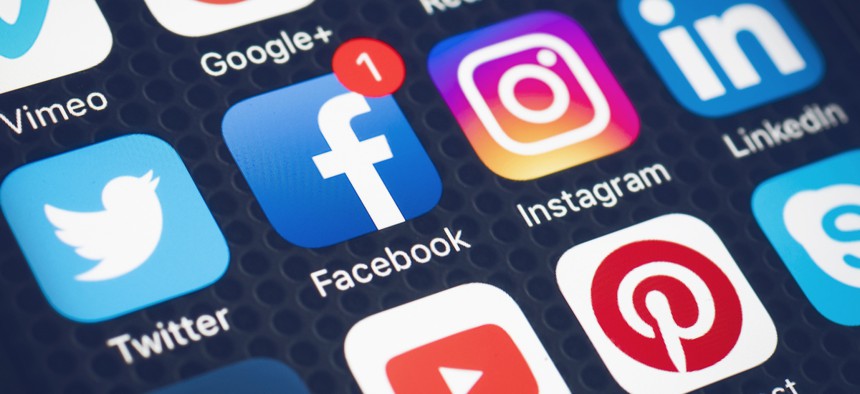Keep Calm and Tweet On: Using Social Media Effectively in a Pandemic

Social media is a valuable tool for state and local government officials to communicate during the pandemic. SHUTTERSTOCK
COMMENTARY | In the social media era, government has never faced a crisis like the Covid-19 pandemic. Here are the principles that communication officials should consider in order to effectively communicate via social during a crisis.
The spread of COVID-19 is an unprecedented challenge for public officials in many ways, including communications. Public information and communication professionals are required to provide a nearly constant stream of critical information related to COVID-19. In getting information out, social media has proven to be one of the most valuable communication tools. But, this is the first time state and local governments have faced a national crisis in the era of social media. Below are six key principles for communication officials to keep in mind to ensure they make effective use of social media in a crisis.
Keep Calm and Tweet On
With many people on edge and glued to their screens, it’s easy to create mass panic with the wrong message. The public is looking to you for direction in how we cope with the new reality. It’s especially important for government agencies to spread their message in a clear, calm and professional way. This means not overusing exclamation points, laying off the caps lock button and putting people in front of the camera who can convey important messages in a controlled and reassuring way, like the National Institute of Health’s medical dream team.
Simplify to Amplify
Remember that the majority of your audience looks at your posts while scrolling through hundreds of others. While in crisis you may hold slightly more of their attention, you are still “competing” with other messages, so your content needs to be as easy to consume and share as possible. To do that, use simple graphics, avoid large blocks of text and try to get your main point across without having people click on a link or watch a lengthy video. The World Health Organization has done an excellent job at communicating clearly, using images and short videos to make important points.
Engage
It may be tempting to set aside responding to social media messages in times of crisis in order to focus on urgent messaging. But don’t! Being responsive is critical in a time when many services are suspended and people can’t communicate in person with public agencies. The Centers for Disease Control and Prevention took time to host a Twitter Q&A, the city of Newark hosts a daily Facebook Live to communicate with residents and the New York City transit authority is patiently responding to their followers’ questions. Tools exist that can help streamline your engagement process, making it easier to identify who you need to respond to.
Get Ahead of Rumors
Crisis + social media = great breeding ground for conspiracy theories. For example, the National Guard is arresting people who walk their dogs? Or coronavirus spreads through Whatsapp? Keep an eye on your networks and try to get ahead of local rumors that may be spreading like, well, a virus. You don’t need to address them all but some may be too extreme or small for a response. But if you see that many in your audience are believing and spreading false information, use your official voice to stop it.
Don’t Give Up on Regular Content
Not everyone can afford to stay home. Public servants and many others are still working every day, and there’s nothing wrong with reminding people of that. Police are making arrests, trash is being picked up and the hungry are being fed. Post regular content that affects your work, and don’t shy away from posts that might make people smile. If you can be funny without being offensive or crass, you may hit the Twitter jackpot like the National Cowboy Museum.
Take Care of Yourselves
You may not be medical staff or law enforcement, but as a communicator you are still on the front lines of this crisis. You’re likely working 24/7, dealing with an anxious audience and coworkers, as well as with the terrifying thought that any post you put out can add fuel to the fire. For your mental, physical and professional wellbeing, remember to take a breath before you hit send. Wash your hands, regularly wipe down your electronics, rest, eat and stay hydrated. In other words, practice what you tweet!
Yael Bar-tur is a digital consultant and former director of digital for the New York City Police Department. She has experience holding workshops, training classes and participating in Hootsuite webinars to discuss best practices for government organizations utilizing social media. Born and raised in Israel, Yael served in the Israeli Army as a foreign press liaison, and holds a Master’s Degree from the Harvard Kennedy School of Government. She current resides in New York.
NEXT STORY: This Summer Will Scar Young Americans for Life





